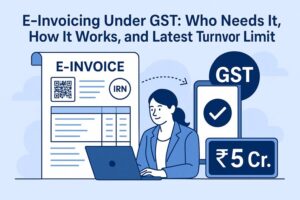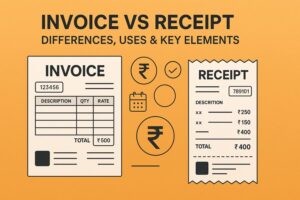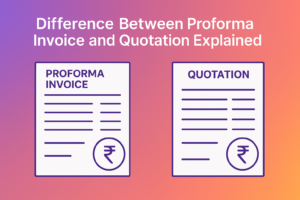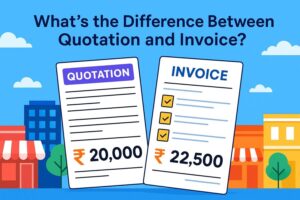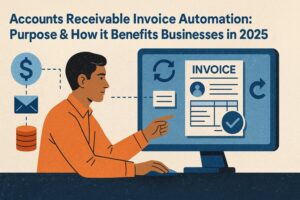5 Key Differences Between Invoice and Tax Invoice
- 20 Nov 25
- 5 mins

5 Key Differences Between Invoice and Tax Invoice
Key Takeaways
- The difference between invoice and tax invoice lies mainly in their purpose. An invoice requests payment, while a tax invoice supports tax reporting and input tax credit.
- A standard invoice is used for general transactions, whereas a tax invoice is legally recognised for GST compliance.
- Only the seller needs registration for issuing invoices, but both buyer and seller must be registered dealers to use a tax invoice.
- The difference between invoice and tax invoice also includes document content. Tax invoices include GST details and tax identification numbers.
- Normal invoices come in two copies, while tax invoices are prepared in three copies for the buyer, seller, and government authority.
Are you confused about the difference between an invoice and a tax invoice? You are not alone! Many business owners, accountants and even freelancers struggle to understand when to use which document.
For instance, both are used in transactions, but each serves a distinct purpose in tax reporting and tax compliance.
This article will provide you with 5 key differences between an invoice and a tax invoice to help you stay compliant and avoid costly mistakes.
What Are the Differences Between an Invoice and a Tax Invoice?
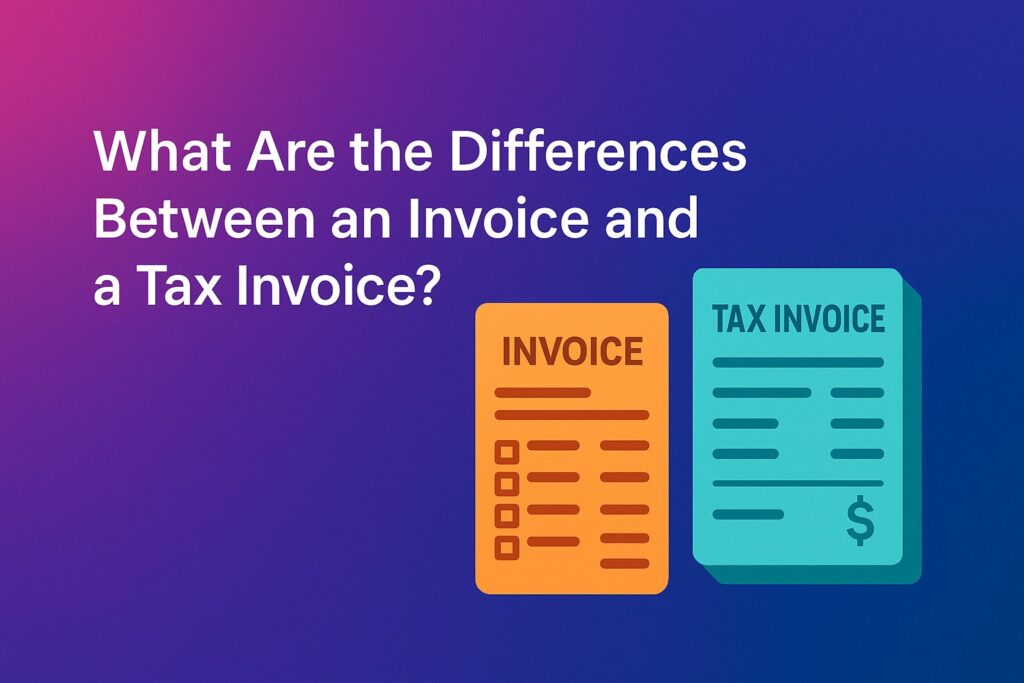
If you have any confusion about the difference between an invoice and a tax invoice, this table below will clear that up for you:
| Factor | Invoice | Tax Invoice |
| Definition | A buyer issues an invoice document to a seller | A tax invoice is a document that the related government authority has legally recognised |
| Contents | Date of issue of invoiceUnique invoice numberBuyer detailsSeller detailsTransacted product(s) quantityUnit price of each productTotal pricePayment termsAny added discountsSignature of the seller | Invoice issue dateUnique invoice numberBuyer detailsSeller detailsTax identification numberDescription of goods or servicesTransacted product(s) quantityUnit price of each productPayment termsRelevant goods & services tax (GST) charged on each itemAmount of charged taxTotal cost (tax + relevant GST)Relevant signatory signature |
| Objective | To request payment for any processed services or goods during the transaction. | To get a form of tax relief or avail input tax credit. |
| Authorisation | Only the business or company registration of the seller is required for normal invoices. | For tax invoices, both the seller and the buyer need to be registered as authorised dealers. |
| Preparation | Normal invoices have 2 copies. One each for buyer and seller. | The tax invoice has 3 copies. One each for buyer, seller, and government. |
What is an Invoice?
Businesses use an invoice for record keeping of a transaction. A standard invoice lists the items bought and sold, along with the amount the buyer needs to pay the seller. People also refer to it as a bill, invoice bill or a payment request.
Use for Sellers
There are 3 primary uses of an invoice to the seller:
- Sellers issue invoices before receiving payment for services or goods.
- They also use invoices to follow up on pending payments.
- They rely on them to maintain a detailed record of how much different customers owe.
Use for Buyers
There are 3 primary uses of an invoice for the buyers:
- Buyers use invoices as proof of purchase.
- These documents help with bookkeeping, accounting and holding sellers accountable.
- If there is an issue with delivery or the product does not meet expectations, buyers can also use the invoice to request a refund.
💡For your invoice generation needs, use the invoice generator tool on the PICE App.
What is a Tax Invoice?
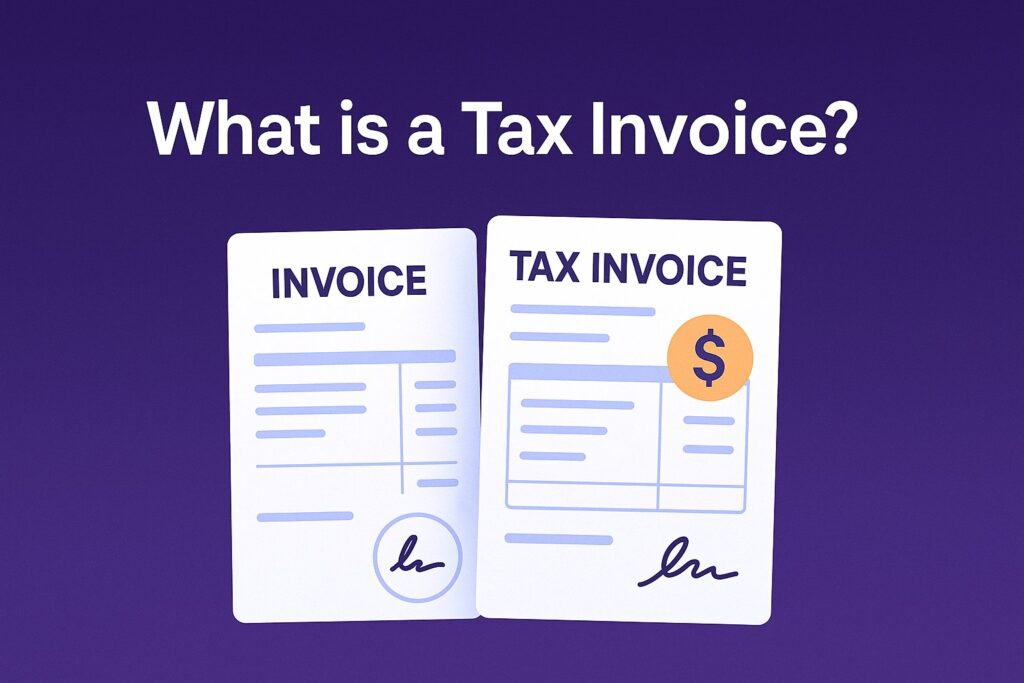
A registered seller issues a tax invoice to a registered purchaser during a sale. The seller creates 3 copies of each tax invoice, out of which one goes to the buyer, and the seller retains the other two. Later, the seller submits the second copy to the relevant government authority.
Each tax invoice has a tax invoice number, which goes up to 16 characters. Income Tax Department of India depends on these invoices to help prevent tax evasion.
Currently, the tax regulations of India mandate businesses having turnover over ₹5 crore to issue e-invoice.
Use of Tax Invoice
Every business in the country relies on tax invoices as they serve as essential proof of transactions within the tax system. Businesses submit the contents of their tax invoices to the relevant tax authority at the end of each financial year to claim benefits such as tax relief.
Conclusion
Understanding the difference between an invoice and a tax invoice can not only help you streamline your billing process but also meet regulatory requirements. It will also help you greatly in understanding and claiming your eligible tax benefits. Therefore, knowing when and how to use each document ensures smoother financial operations for both buyers and sellers.
 By
By 





